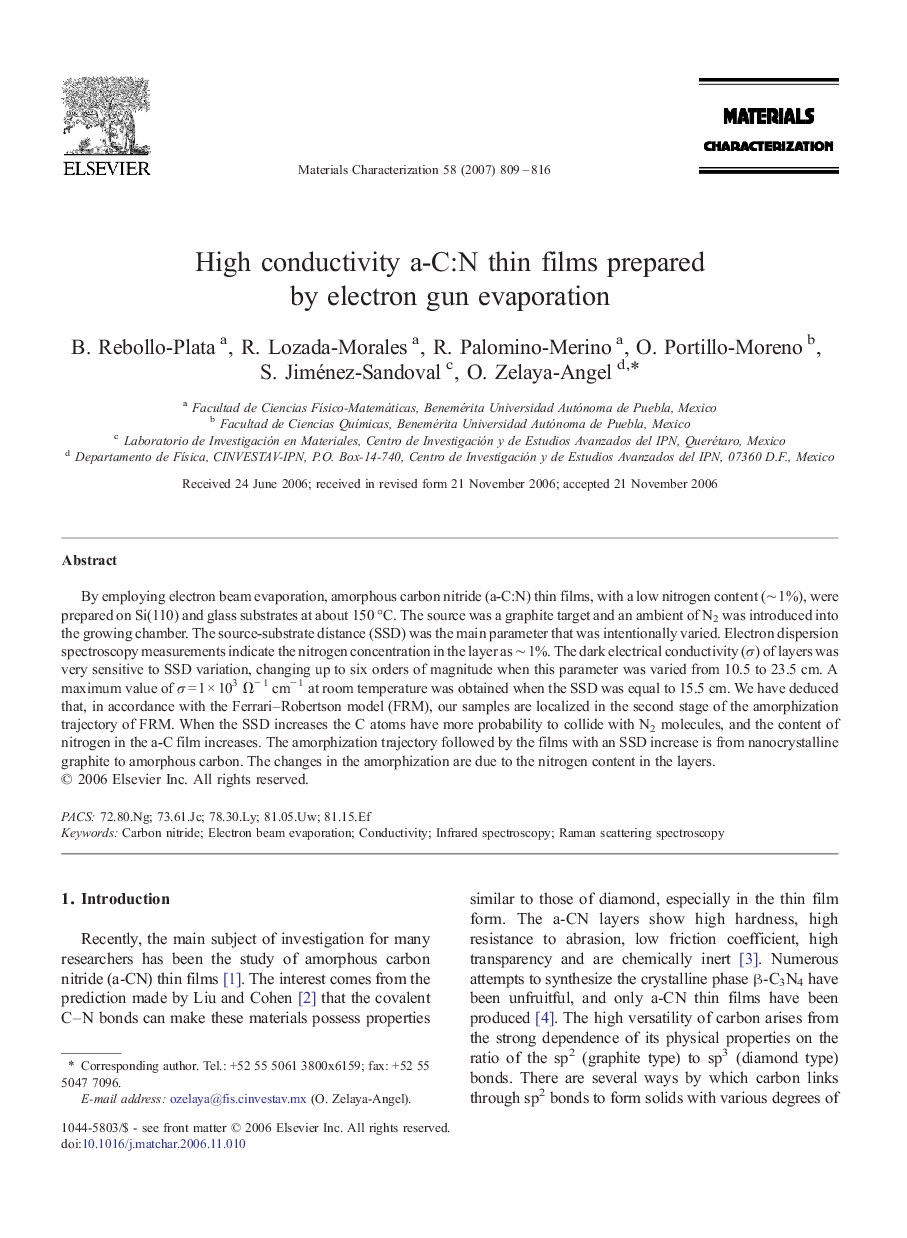| Article ID | Journal | Published Year | Pages | File Type |
|---|---|---|---|---|
| 1572448 | Materials Characterization | 2007 | 8 Pages |
By employing electron beam evaporation, amorphous carbon nitride (a-C:N) thin films, with a low nitrogen content (∼ 1%), were prepared on Si(110) and glass substrates at about 150 °C. The source was a graphite target and an ambient of N2 was introduced into the growing chamber. The source-substrate distance (SSD) was the main parameter that was intentionally varied. Electron dispersion spectroscopy measurements indicate the nitrogen concentration in the layer as ∼ 1%. The dark electrical conductivity (σ) of layers was very sensitive to SSD variation, changing up to six orders of magnitude when this parameter was varied from 10.5 to 23.5 cm. A maximum value of σ = 1 × 103 Ω− 1 cm− 1 at room temperature was obtained when the SSD was equal to 15.5 cm. We have deduced that, in accordance with the Ferrari–Robertson model (FRM), our samples are localized in the second stage of the amorphization trajectory of FRM. When the SSD increases the C atoms have more probability to collide with N2 molecules, and the content of nitrogen in the a-C film increases. The amorphization trajectory followed by the films with an SSD increase is from nanocrystalline graphite to amorphous carbon. The changes in the amorphization are due to the nitrogen content in the layers.
